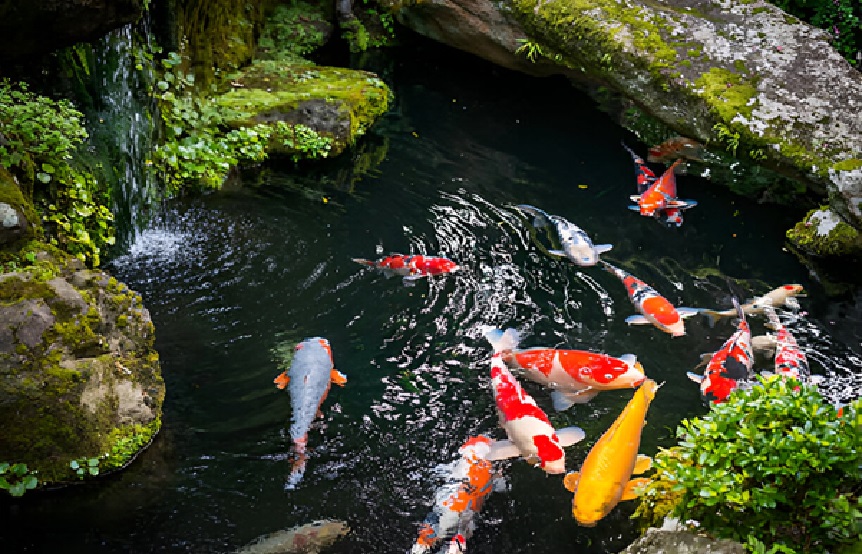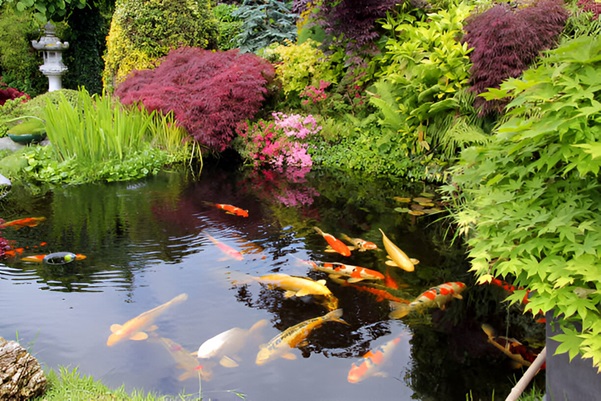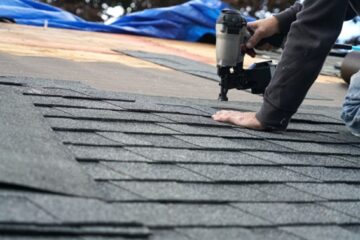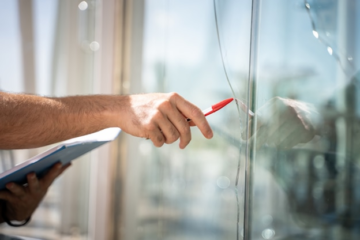
Any water garden will receive the benefits of living colour and peace thanks to Koi and pond fish. All pond enthusiasts and novices need to master basic fish care concepts to develop a thriving fish habitat.
From maintaining water quality to choosing the right equipment like a koi pond drum filter, That Pond Guy has you covered.
A thriving aquatic environment awaits your finned friends as you discover expert advice and top-notch solutions at this location.
1. Clean Water is Non-Negotiable
A pond requires clear water to maintain good health. Your water will display green or brown tints primarily in spring, but a well-built filtration setup containing a koi pond drum filter manages waste and debris effectively.
Regularly check mechanical skimmers for surface debris and biological filters to break down harmful compounds. Clean water ensures healthy fish and enhances your pond’s beauty.
2. Maintain a Balanced Fish Population
The water quality will suffer when you pack a pond with too many koi and goldfish. Every fish needs at least 10 gallons of water for each inch of their length, so a 10-inch koi requires 100 gallons.
Overcrowding increases waste, overwhelming filtration and endangering your fish. Start with fewer fish and allow room for growth. A balanced population ensures your pond remains a healthy habitat for years to come.
3. Feed Your Fish the Right Way
The right nutrition sustains both koi and pond fish. High-quality fish food that contains protein and vitamins alongside probiotics is needed to supplement their diet with algae and insects.
Feed only what they can eat in 3-5 minutes, once or twice daily. Overfeeding pollutes water as uneaten food decays. In colder months, reduce feeding and stop entirely below 50°F, as fish metabolism slows.
4. Invest in Proper Filtration
A koi pond drum philtre represents a fundamental tool for achieving clear water conditions. The philtres work effectively to remove small particles and waste, therefore maintaining both clear water and healthy fish in your pond.
Your fish will benefit from a safe environment when you pair the biological philtre with this device to reduce harmful ammonia and nitrites.
Clear your philtres periodically because this practice stops blockages and optimises their efficiency. The foundation of a healthy, thriving pond rests squarely on a well-kept filtration system.

5. Seasonal Care for Your Pond
Pond maintenance varies with the seasons. In spring, clean out debris and check equipment after winter. Summer requires monitoring water quality and algae growth.
Leaves require removal during autumn but pond freezing prevention demands heaters or de-icers during winter.
In winter pond cover acts as a protective barrier which protects fish while preventing debris accumulation. The annual maintenance of ponds sustains their natural environment throughout all seasons.
6. Monitor Water Levels and Quality
Monitor pond water levels on a frequent basis when hot or dry conditions occur. Add dechlorinated water when needed to preserve the proper water level.
Track the water quality by using a testing kit to measure pH and ammonia and nitrites while making appropriate changes to maintain healthy fish.
Final Thoughts
Having koi and pond fish in your outdoor area provides both aesthetic value and tranquilly and serves as an enriching hobby.
A thriving aquatic habitat and vibrant peaceful water garden will result from clean water maintenance along with proper fish population balancing and appropriate feeding and filtration investment.
The Role of Underlayment in Shingle Roofing Systems
April 1, 2025
Comments are closed.
More News
-
Five Must-Have Traits in a Disaster Restoration Company
March 18, 2024 -
The Best Smart Lighting Solutions for Cathedral Ceilings
February 2, 2025







